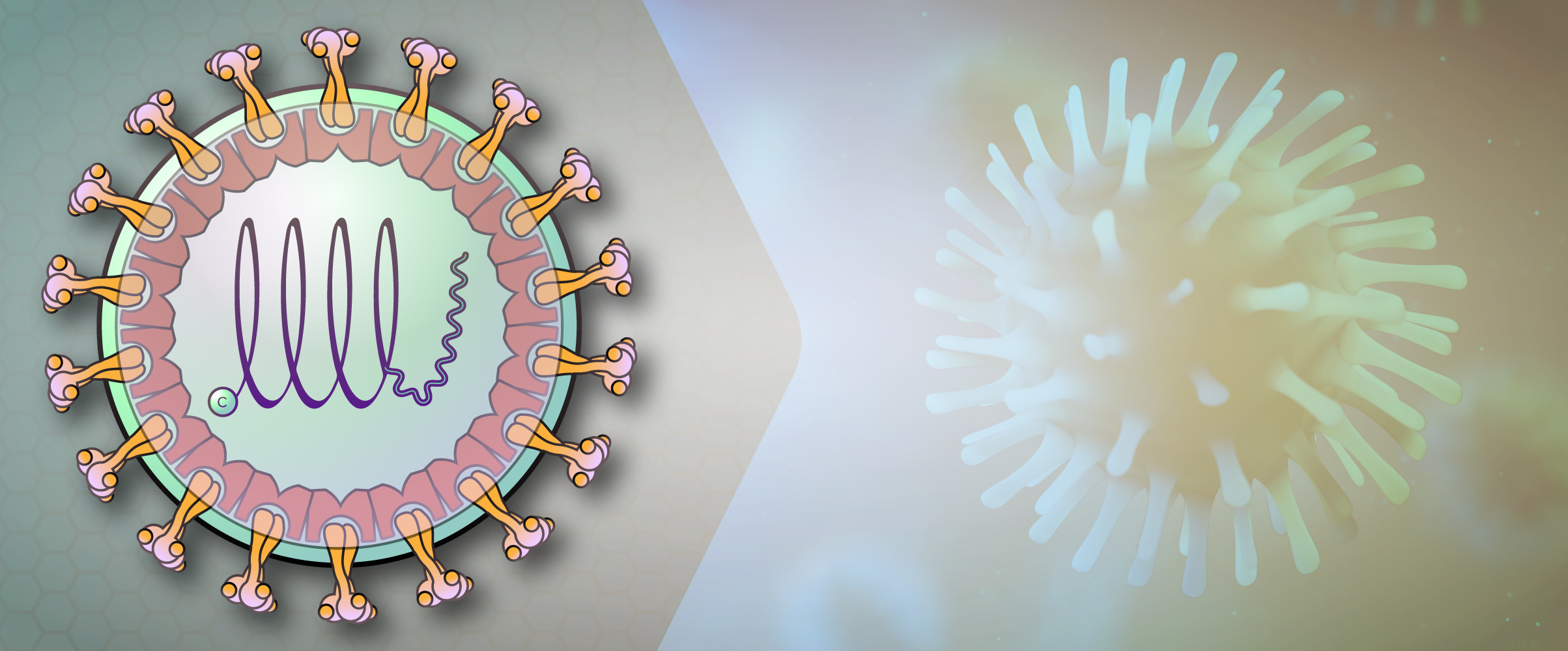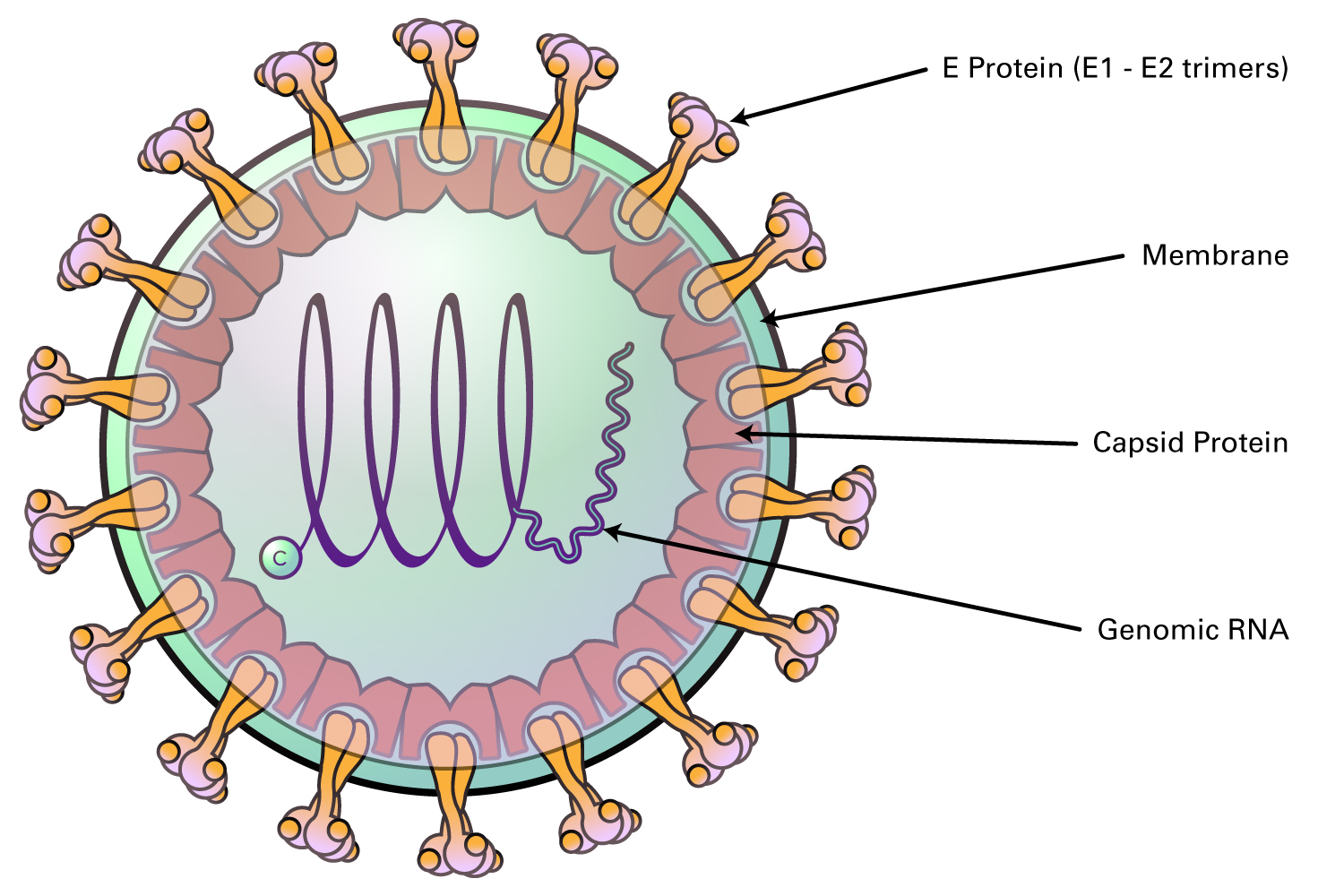order histories, retained contact details for faster checkout, review submissions, and special promotions.
Forgot password?
order histories, retained contact details for faster checkout, review submissions, and special promotions.
Location
Corporate Headquarters
Vector Laboratories, Inc.
6737 Mowry Ave
Newark, CA 94560
United States
Telephone Numbers
Customer Service: (800) 227-6666 / (650) 697-3600
Contact Us
Additional Contact Details
order histories, retained contact details for faster checkout, review submissions, and special promotions.
Forgot password?
order histories, retained contact details for faster checkout, review submissions, and special promotions.
Togaviridae (Measles)
Togaviridae are a family of single-stranded, positive-strand RNA viruses that include the genera Alphavirus and Rubivirus. The Alphaviruses within this family include arboviruses, which cause two types of diseases: the Eastern, Western, or Venezuelan equine encephalitis viruses cause fever, malaise, headache and encephalitis; and the viruses Chikungunya, Ross River, Mayaro, and Sindbis viruses cause fever, rash, and arthralgias. Rubella Virus is the only member of the genus Rubivirus, and humans are the only known host. It is the causative agent of rubella (German measles) in children, and can cause birth defects known as congenital rubella syndrome in early pregnancy.

About Togaviridae
The Togaviruses are enveloped, with an icosahedral capsid made of 240 copies of the nucleocapsid protein. The envelope contains 80 trimer spikes comprised of the E1 and E2 glycoproteins. The RNA genome is 9.7-11.8 kb, and is capped and polyadenylated. The virus infects cells by attachment of the viral E glycoprotein to host receptors, triggering clathrin-mediated endocytosis of the virus into the host cell. The virus membrane fuses with the host endosome, releasing the RNA genome into the cytoplasm. The positive-sense ssRNA is then translated into a polyprotein, which is cleaved by the viral nsP2 protease into non-structural proteins responsible for RNA replication and transcription. The positive sense ssRNA is transcribed into a complementary antisense RNA, which serves as a template for synthesizing genomic ssRNA. Transcription of subgenomic RNAs within the latter third of the genome give rise to a structural polyprotein, which is cleaved to produce the viral structural proteins. After capsid assembly, the virus is enveloped and budded at the plasma membrane.

Figure 1: Structure of Togaviridae Virus
The Alphaviruses include mosquito transmitted diseases such as Eastern, Western, or Venezuelan equine encephalitis, which are characterized by fever, malaise, headache and encephalitis, and diseases caused by the Chikungunya, Ross River, Mayaro, and Sindbis viruses, which produce arthralgias. The syndrome produced by viruses such as Chikungunya result in intense joint pain, high fevers, and a rash, and although infection is self-limited, symptoms may persist for years. In addition to mosquito transmission, the virus can be transmitted vertically as well as with infected blood transfusions.
Rubella Virus is the only member of the genus Rubivirus, and it is the causative agent of rubella (German measles) in children. It is transmitted by respiratory droplets. Rubella virus can act as a teratogen, and produce a spectrum of severe birth defects known as congenital rubella syndrome if contracted during the first trimester of pregnancy.
References
- Da Cunha, RV and Trinta, KS. Chikungunya virus: clinical aspects and treatment-A Review. 2017. Mem Inst Oswaldo Cruz 112 (8):523-531. Doi: 10.1590/0074-02760170044
- Lee, j-Y and Bowden, DS. Rubella Virus Replication and Links to Teratogenicity. 2000. Clin Microbiol Reviews. Doi: 10.1128/CMR.13.4.571
- Parkman, PD. Togaviruses: Rubella Virus. 1996. Medical Microbiology 4th Ed. Chapter 55.
- Schmalijohn, AL and McClain, D. Alphaviruses (Togaviridae) and Flaviviruses (Flaviviridae). 1996. Medical Microbiology 4th Ed. Chapter 54.
All Togaviridae (Measles) Products












